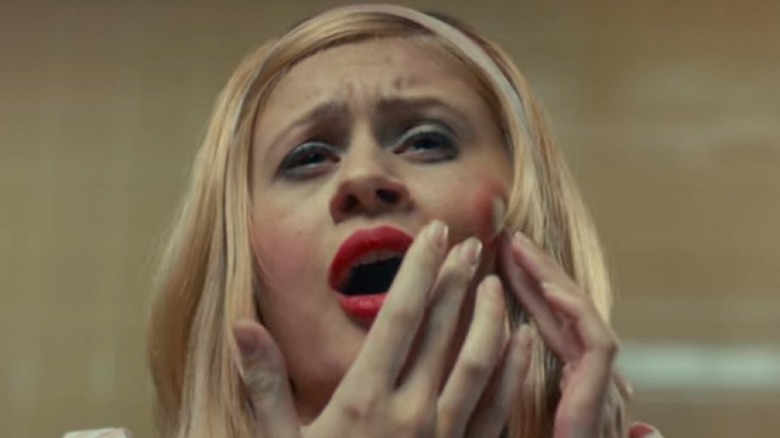Is Scary Stories To Tell In The Dark Based On The Books?
The '80s and '90s were a weird time to be a kid. Between shows like "Ren & Stimpy," video games like "Heart of Darkness," and books like the "Scary Stories to Tell in the Dark" series, kids a buffet of transgressive entertainment choose from. Now that the '90s are over 20 years in the past, and with '90s kids now approaching their peak earning years, the nostalgia train is officially pulling into the station with recycled versions of our favorite childhood classics.
The "Scary Stories to Tell in the Dark" books traumatized many a millennial. The haunting illustrations by Stephen Gammell alone were enough to feed many sleepless nights. The stories covered topics like child abandonment ("The Drum"), acts of cannibalism ("Wonderful Sausage"), and — perhaps most famously — child decapitation ("The Red Ribbon").
With all that in mind, how faithful was Guillermo del Toro's movie adaptation to the books? Did the "Pan's Labrynth" director decide he had to pull any punches?
It follows the books very closely, and even incorporates some of the original artwork
Overall, the movie is pretty faithful to its source material, although not necessarily as scary as the original stories. Most of the stories follow the text, with a few minor tweaks here and there. Some of the changes were clearly intended to soften the blow for the film's younger intended audience. It was rated PG-13, after all.
The movie still did a great job leveraging horrifying visuals in order to crank up the scary factor. Because del Toro is such a fan of the books that he owns some of Gammell's original artwork, those black-and-white sketches were carefully adapted to be as faithful to the books as possible. The movie did an especially fantastic job with The Pale Lady from "The Dream" and the scarecrow from "Harold" (via Time).
If you're a fan of the books itching for some nostalgia, you can check it out on Netflix right now.

